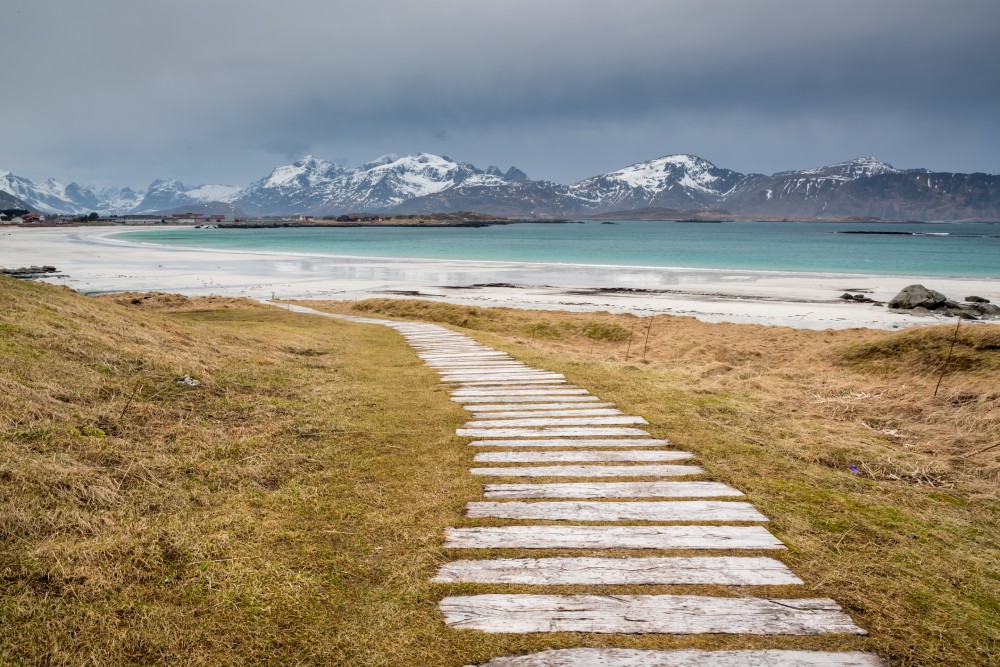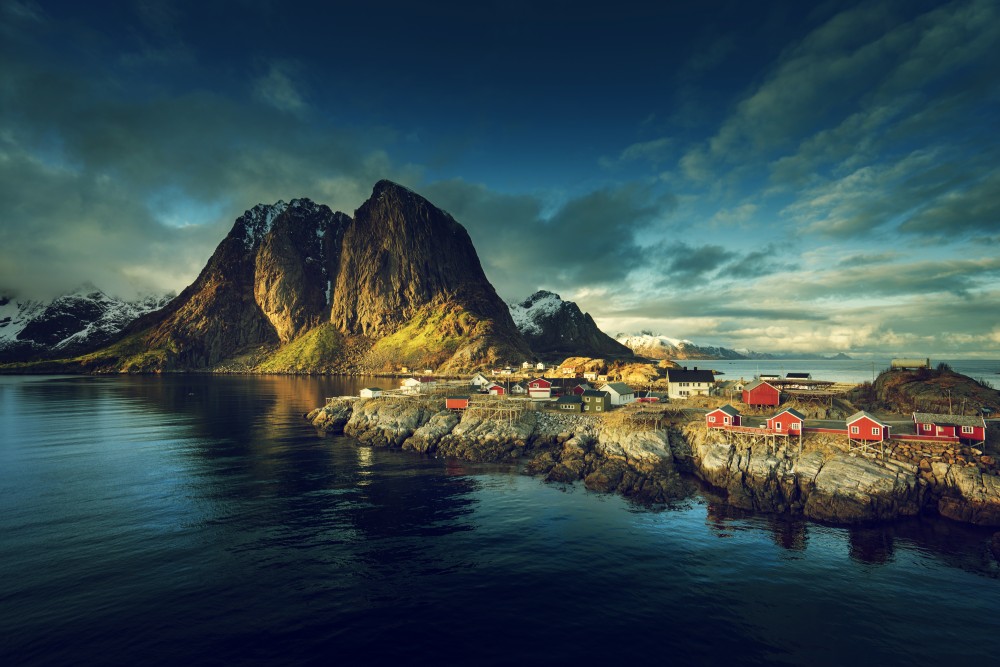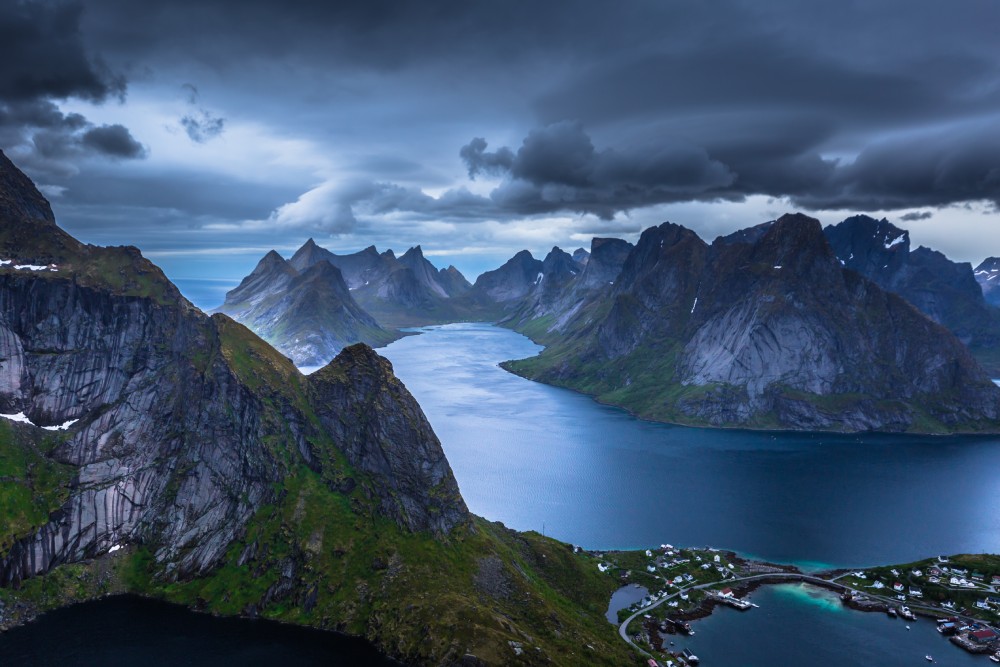The Lofoten Islands: Exploring the Beautiful Norwegian Archipelago
Have you ever wished to embark on a genuine adventure in Norwegian Winterland? The Lofoten Islands may be one of the best destinations out there for this purpose! As one tourist described the Lofoten Islands, “it feels like God took some Alpine mountains and pitched them randomly in the Norwegian Sea.” Besides, there are even many Norwegian trekking routes in the Lofoten Islands, as this destination has everything required for a good trekking trip: mountains, beautiful sandy (and sometimes rocky) beaches, wonderful nature, and an opportunity to enjoy this very nature in solitude.

What Are the Lofoten Islands and What Makes Them Popular?
The Lofoten Islands are located in the country of Nordland, the capital of which is the city Bodø – the latter is oftentimes used as a transitional hub for reaching the Lofoten from Oslo (see below). The peculiar fact about Lofoten is that this archipelago is located in the Arctic Circle (to the western south from the far-north city of Tromsø), yet enjoys the world’s largest anomalies of elevated temperature in regards to its high latitude.
Lofoten is well-known thanks to its indescribable nature, beautiful peaks, sandy and rocky shores, and azure water. But it appears that not only the authentic nature of Norway attracts thousands and thousands of visitors, but also numerous species of rare wilderness and the region’s connection with the Viking Age.
The warm Gulf Stream ensures that the temperatures there will be quite moderate and not too cold. In August, the average temperature of the water is equal to 14 Celsius degrees, which is only slightly less than the air temperature in the same period (15-16 Celsius degrees).

Above all, the Lofoten Islands are appealing to travelers due to the natural phenomena they can observe. For example, the visitors can observe the midnight sun – i.e. when the sun remains up till midnight, which usually occurs in the places within the Arctic Circle – from 25 May to 17 July. At the same time, the sun does not rise above Lofoten at all from the beginning of December up to the beginning of January.
Aurora Borealis, usually referred to as the Northern Lights, is also a phenomenon that travelers seek to witness in Lofoten. The Lofoten Islands are known for their nasty weather in winter, which can leave you in anticipation of good weather for days. At the same time, beautiful peaks and irresistible, endless shores provide a worthy reward for the risk of bad weather. The first auroras in Lofoten appear in late August and last until mid-April, though the best period for northern lights safaris is from September to March.

What To Do in Lofoten Islands?
The Lofoten Islands are a perfect spot for the sports activities you may want to undertake, and this tends to be the reason for the majority of tourists who come there. Yet, we can also suggest you visit the Lofotr Viking Museum because it was the largest longhouse of Vikings to have been ever found (and it was later transformed into a Viking Museum). And now, you can look through our shortlist of the most popular sports activities in Lofoten.
Trekking. As we described in our previous blog post, the Lofoten Islands are a perfect spot for all kinds of trekkers – regardless of whether you want to embark on an adventure in the mountains or simply promenade across an endless shore. All in all, trekking in Lofoten is ideal for enjoying stunning Norwegian nature.
Surfing. This archipelago features many spots for exciting surfing activities, which is no worse than, for example, in the north of France. Moreover, the warm Gulf Stream makes the water even warmer than near the northern coast of France, while the waves are equally large and difficult to handle. Unstad is one of the best places for surfing in entire Norway.
Rock climbing and mountaineering. Indeed, Norway has much lower mountains than Spain or France, yet there are fantastic opportunities for rock climbing as well. Lofoten deserves special credit for that in particular. If you want to undertake rock climbing in somewhat popular places, head to Austvågøy. The Moskenesøya Island is perfect for more serious climbers. Besides, the 24-hour long day in the mid-summer gives the climbers plenty of time for reaching peaks.
Cycling. This activity also allows you to take pleasure in Norwegian nature while testing your endurance. There are several popular cycling routes, but the most popular one runs from the famous village (thanks to its name) called Å.
Fishing. While there are more popular spots for fishing in Norway, fishing in Lofoten allows you to relish in complete solitude while enjoying your favorite activity. The above-mentioned village is a hub for many local and foreign fishermen.

How to Reach Lofoten?
The easiest way to get to Lofoten would be by car and then, from Bodø, by ferry. Another quite easy way of reaching this archipelago is actually booking a flight from Oslo, Bergen, or Tromsø. However, you must keep in mind that the flights are not regular and barely occur during the winter season (due to poor weather conditions and falling demand).
Another way how many tourists get here (and which allows you to save some money) is by reaching Bodø by train (90 Euro is the cheapest ticket from Oslo). From there, you can take a regular ferry to Moskenes or book a cruise on Hurtigruten.
Share this post:

